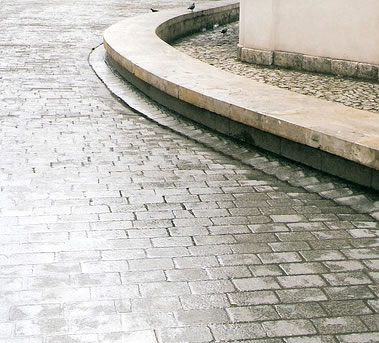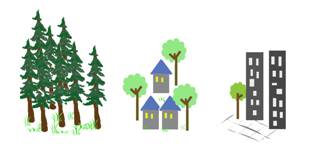Paving the watershed
So when it rains, things get washed into the watershed. That's good as a general principle, but we can refine it a bit.
If the land around the stream is filled with grass, bushes, or trees, and the soil is not packed down, then lots of water will soak in, or "infiltrate" into the ground. This is good because the soil acts like a natural filter, cleaning out the water before it gets to the stream. It also acts like a sponge, holding onto the water the it doesn't all rush into the stream like a fire hose.
But when rain falls on a street, parking lot, or sidewalk, it can't soak in. Instead it flows very quickly into the stream or into nearby storm drains.
 Ever wonder where those storm drains go? Mostly, they go directly into the nearest stream, along with any dirt, trash, pesticide, oil or other pollutants it might happen to encounter. Paved surfaces that prevent rainwater from naturally soaking into the ground are called impervious surface, or IS for short.
Ever wonder where those storm drains go? Mostly, they go directly into the nearest stream, along with any dirt, trash, pesticide, oil or other pollutants it might happen to encounter. Paved surfaces that prevent rainwater from naturally soaking into the ground are called impervious surface, or IS for short.
Pollution from impervious surfaces is linked directly to land use. This is especially true in the areas right around a stream or river, called the buffer zone.
(mouse over the image for details!)
Even 15% impervious surface in the buffer zone may cause serious water quality problems. Water enters the stream quickly, causing erosion. It carries with it dirt, toxic chemicals, and trash. And the hot surfaces of the pavement heat up the water, delivered a kind of heat shock to the stream.
Copyright University of Maryland, 2007
You may link to this site for educational purposes.
Please do not copy without permission
requests/questions/feedback email: mathbench@umd.edu
